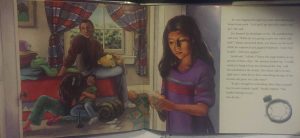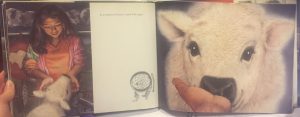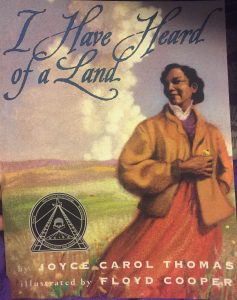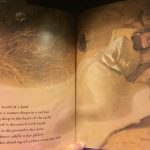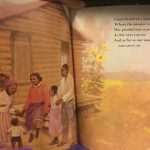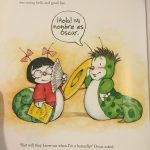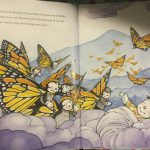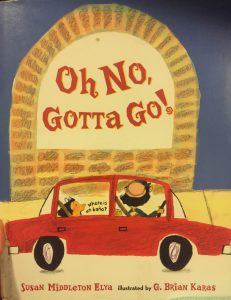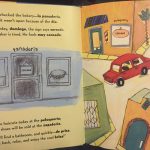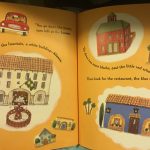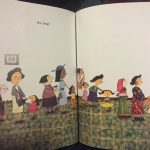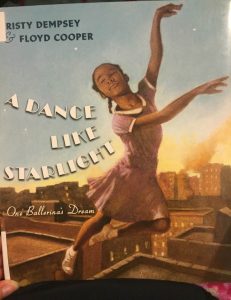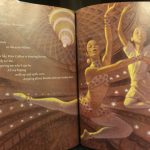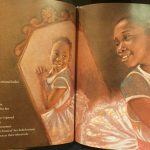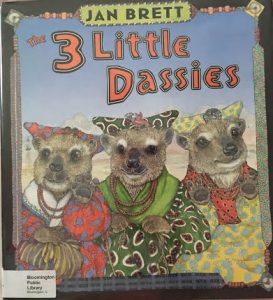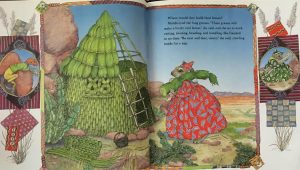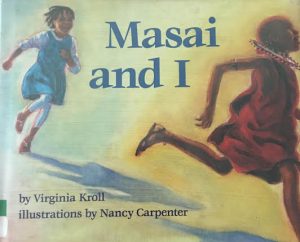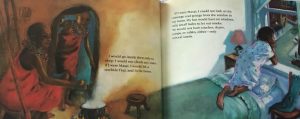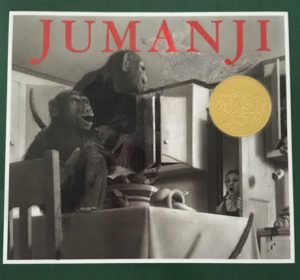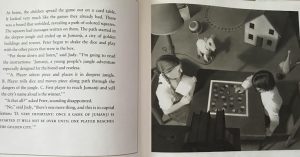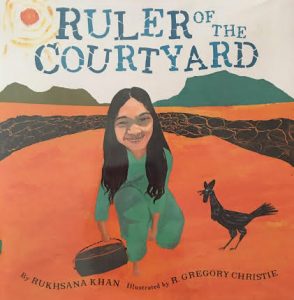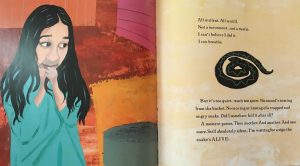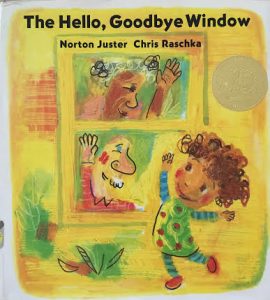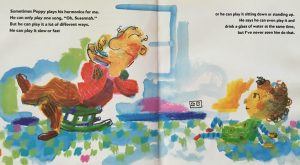Author(s): Kim Doner
Illustrator/Photographer: Kim Doner
Publisher and Year: WestWinds Press in 1999
Number of Pages: 38
Genre: Fiction
Analysis:
This story is about the Bearpaw family and how they decide to make a trip to visit the only white buffalo on earth which is a symbol in the Native American culture for a spirit named White Buffalo Calf Woman, and the children believe that touching the calf will bring them magic. The oldest child, Sarah, is given an eagle feather from her grandfather’s headdress which is supposed to represent strength to her dreams, and she decides she wants to give this feather to the calf so that “her dreams can grow, too” (Doner p.11). In the end, the two children accidently end up in the buffalos’ pen and have a close encounter with the white buffalo calf’s mother, but before they end up escaping from the mother buffalo, the calf comes over and puts her head into Sarah’s palm.
The illustrations are large and usually take up the whole two-page spread. The images are also unframed which makes the reader feel like they are also experiencing everything with the characters. The images are also very detailed and realistic which again add to the reader feeling like they, too, are a part of the scene. I also noticed that at the bottom of each two-page spread was a dreamcatcher, but it showed the progression of making a dreamcatcher from its beginning stages in the beginning of the story to the completed dreamcatcher at the end. The characters in this story are both described and illustrated as Native Americans which are accurately represented in relation to their culture, not just the stereotypical idea of how Native Americans look, act, or dress.
When first reading this story, I thought that it was just a story about a Native American family visiting a rare white buffalo because they thought it was magical. However, after reading the author’s note and the legend of the White Buffalo Calf Woman in the back of the book, I realized that this story was inspired by a Native American legend about a White Buffalo Calf Woman who helps answer the dreams of believers, and an actual white buffalo calf that was born in 1994 named Miracle. I believe this story is a great window for children to learn about the Native American culture because it includes Native American legends and traditions. I also think that this story works as a mirror for modern day Native American children because there are not many stories which talk about Native Americans in a modern day setting. Overall, this story is a great way to introduce Native American culture into children’s literature.
